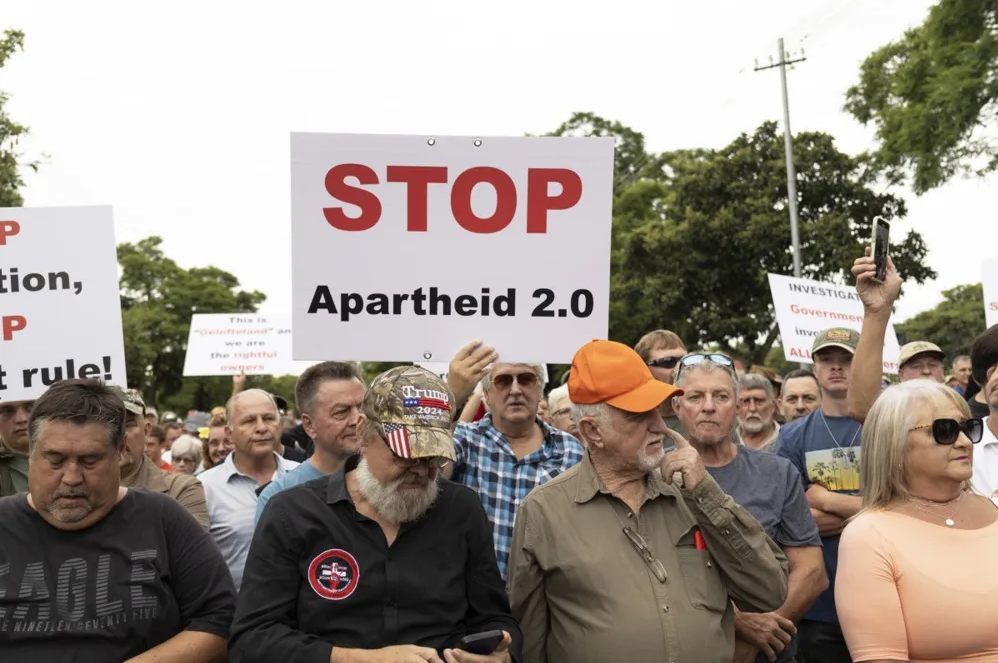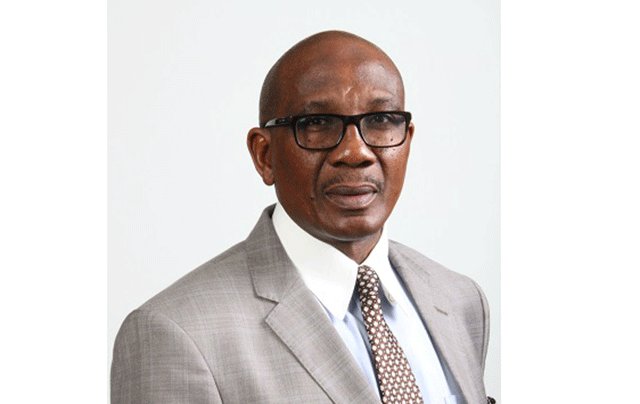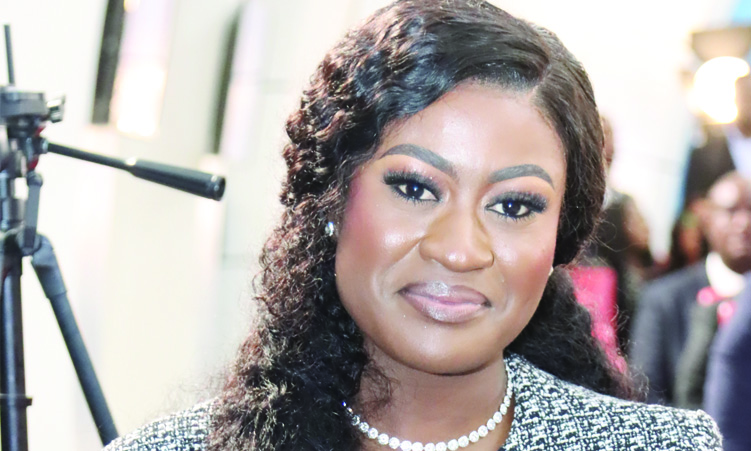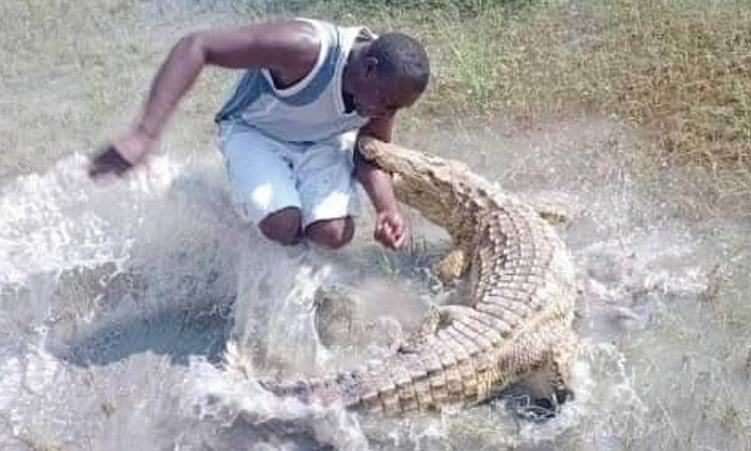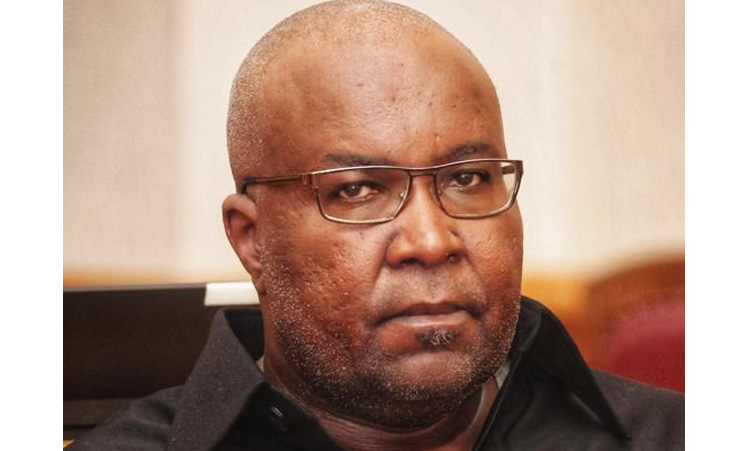Afrikaners may grow long beards waiting for President Donald Trump’s executive order offering asylum to the promised land to take effect.
he 70,000-odd “self-identified” Afrikaners who have expressed interest in taking up US President Donald Trump’s executive order offering asylum will have to brace themselves for a complex, bureaucratic long haul.
The surprise offer by Trump in January followed several treks to the US and apparently “fierce” lobbying by “minority” groups, AfriForum and Solidarity.
On Thursday, Minister in the Presidency Khumbudzo Ntshavheni announced that the government had been “in talks” with both organisations regarding “misinformation” they had spread about farm murders in South Africa as well as the claim that only white people were being targeted.
“To prevent further misinformation, the South African Police Service (SAPS) met with AfriForum to clarify the allegations of white genocide with reference to farm murders.
“At the meeting, AfriForum conceded that the crime statistics as released by the Minister of Police are accurate, including on farm murders,” she said.
Ntshavheni said “it is common knowledge that some of the farm murders are committed by people known to the farmers, including family members.”
Red tape unfurling everywhere
AfriForum, Solidarity and other organisations claiming to speak for Afrikaners were in the US when President Cyril Ramaphosa signed the Expropriation Bill into law in January this year.
There they “handed over” a so-called “Washington Memorandum” pleading for “humanitarian assistance” for Afrikaners.
Read more: The big lie of the land — Ramaphosa politely schools ‘terrible things’ Trump on SA’s land reform
The man on whose shoulders the burden first came to rest after Trump’s “generous offer” was Neil Diamond of the South African Chamber of Commerce in the USA (Saccusa).
He has returned to the US after heading a “delegation” to the US embassy in Hatfield, Pretoria, last week to hand over a list of those seeking asylum in the United States.
There they were politely informed that officials were “not able to take third-party applications” and that refugee wannabes had to register themselves with the US Department of State.
The visit, in other words, had been completely unnecessary, more a symbolic act to kick up some publicity and political dust than speeding up any preferential treatment.
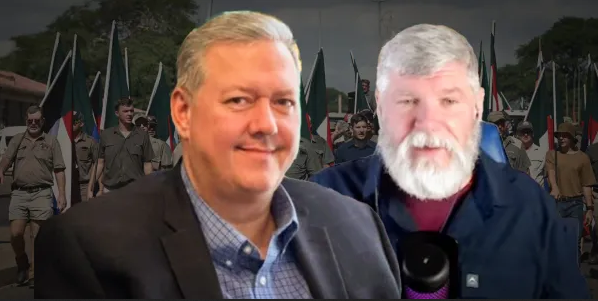
In an hour-long interview with Diamond by American YouTuber Colonel Chris Wyatt, it became clear that the visit was more theatre than the greasing of bureaucratic wheels.
Wyatt, who produces inserts about Afrikaner immigration to the US, was the first to warn the hopefuls among his 63,000 subscribers that they should think long and hard before rushing to make a decision.
Diamond politely tried to conceal his frustration in dealing with US bureaucracy since the Trump executive order.
“I don’t want to comment on the time frame, but the government wheels turn unfortunately a little bit slower than most,” Diamond told Wyatt, adding that “maybe government has got a bigger onus when they say something to make sure it is accurate because people’s lives are at stake here”.
South Africans, he warned, should “be sure when they take the decision they are taking the right decision for them and their families”.
Wyatt, too, tried to back-walk the promise, reminding those seeking to flee South Africa that they might find themselves “out of the frying pan into the fire”.
“Let’s make sure that you don’t exit the frying pan and end up in the fire because we here in the US want to welcome those South Africans that want to come and we want to support you, but we want you to be mindful of what you are signing up for.”
It was important to bear in mind that the children of those who pass through the bureaucratic cruncher will no longer be Afrikaners in one generation.
In other words, they would end up as Americanos or detribalised Boers, so to speak.
“I mean, unless you’re in Perth, which is, you know, South Africa east, it is difficult to maintain that culture and that is going to be gone – if it’s important to you (writer’s emphasis) – within a generation or two for sure,” warned Wyatt.
Who’s a Boer?
What emerged in the discussion is that a further curveball has come into play, and that is the definition of what and who is an Afrikaner.
Wyatt explained that regardless of the photo op in Pretoria and elsewhere, a vetting process was already whirring away in the background.
He said that officials would have to come up with a “hybrid” refugee status for Afrikaners. That is, if they met “certain criteria and conditions”.
“Right now, that condition is Afrikaners who are suffering unjust racial oppression. We need to wait and find out what the US government defines as an Afrikaner because my definition is broader,” the colonel extrapolated.
South Africa was, he said, “not exactly a country where people are fleeing from artillery rounds and rapes and murders and stuff like that.
“This is a country where things are in place and we’re granting status based on oppression or perceived oppression of a particular group.”
Politically correct minority
Diamond told Wyatt that he had learnt during his visit that it was no longer politically correct to talk of “whites” or “Afrikaners” but of “minorities”.
What is interesting to note here is perhaps the prising open of a potential loophole. Broadening the definition of “Afrikaner” (which literally is going to take a blood or pencil test to prove – MT) to “minority” opens the door to “other whites”, whoever they may be – perhaps some English-speaking Trump supporters.
South Africa, everyone is learning, has diversity even within a minority. Afrikaners themselves are so diverse, each grouping desires and promises their “followers” their own homeland.
“I don’t want to say anything negative, but I think President Trump’s executive order was the first part of the process to unfold,” cautioned Diamond.
What needed to happen now, of course, was for this executive order to be given effect. And for that to happen, it would be making its way to Washington, DC, where the laws and rules were hammered out between golfing rounds.
The refugee guy
Diamond said he had been “comforted” by the fact that Trump had “tweeted on Truth Social” that the process was “ongoing” and that he was still “committed to bring Afrikaners to the United States”.
Diamond, it became clear, is keen to extricate himself from being the focus as multitudes began immediately packing for the US.
“I think people need to realise the South African Chamber of Commerce USA is here to facilitate business ties between the US and South Africa on behalf of businesses in the US and South Africa owned by South Africans and Americans, and others.”
This was a constituency he had responded to “and it wasn’t people interested in the refugee programme”.
But once Trump had made the grand announcement, “I felt an obligation to try and help people out the same way.”
People saw him as “the refugee guy”, but “I am not the guy. I’m just here to give people the truth and unlike a lot of these people, I’ve been telling them the truth all along.”
That truth being that the bureaucratic machine of the US government is most likely going to crunch these applications to death.
It was revealed that among those who had applied were many families of four or more with several dependants, widows and widowers as well as single people.
None appears to be “farmers”.
Diamond said that “resettling ethnic minorities” would require a network within the US to help “provide them with access to either employment opportunities or at least steer them in the right direction when they arrive in the US”.
“We’ve got a very vibrant and dynamic diaspora community in the US and we don’t want to see our fellow South Africans being in a high-rise in an overpopulated city when they come to the US,” Diamond concluded.
In the end, bureaucracy will be the decider. Those standing in line might as well get on with life in South Africa. DM
Stay informed with The Namibian – your source for credible journalism. Get in-depth reporting and opinions for
only N$85 a month. Invest in journalism, invest in democracy –
Subscribe Now!




